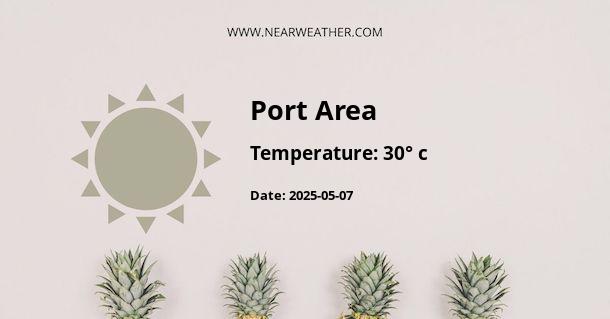Climate and Weather in Port Area, Philippines
Port Area is a district located in Manila, the capital city of the Philippines. As a coastal area, Port Area experiences a tropical climate characterized by high temperatures, high humidity, and distinct wet and dry seasons. In this article, we will explore the climate and weather patterns in Port Area throughout the year.
Temperature
The temperature in Port Area remains relatively high throughout the year, with little variation. The average annual temperature hovers around 27-32 degrees Celsius (81-90 degrees Fahrenheit). The hottest months are typically April and May, with temperatures occasionally reaching 35 degrees Celsius (95 degrees Fahrenheit). Even during the cooler months from December to February, temperatures rarely drop below 20 degrees Celsius (68 degrees Fahrenheit).
Here is a table summarizing the average monthly temperatures in Port Area:
| Month | Average Temperature (°C) | Average Temperature (°F) |
|---|---|---|
| January | 25 | 77 |
| February | 26 | 79 |
| March | 27 | 81 |
| April | 28 | 82 |
| May | 29 | 84 |
| June | 29 | 84 |
| July | 28 | 82 |
| August | 28 | 82 |
| September | 28 | 82 |
| October | 28 | 82 |
| November | 27 | 81 |
| December | 26 | 79 |
Rainfall
The Philippines experiences a distinct wet and dry season, and Port Area is no exception. The rainy season typically runs from June to November, while the dry season spans from December to May. During the wet season, Port Area receives the majority of its annual rainfall, with heavy downpours and occasional typhoons.
On average, Port Area receives around 2,000 to 2,500 millimeters (79 to 98 inches) of rainfall annually. The rainiest months are often July, August, and September, with the possibility of receiving over 300 millimeters (12 inches) of rain in a single month. The dry season, on the other hand, is characterized by lower rainfall amounts and fewer rainy days.
Here is a table summarizing the average monthly rainfall in Port Area:
| Month | Average Rainfall (mm) | Average Rainfall (inches) |
|---|---|---|
| January | 20 | 0.8 |
| February | 15 | 0.6 |
| March | 15 | 0.6 |
| April | 25 | 1.0 |
| May | 80 | 3.1 |
| June | 170 | 6.7 |
| July | 240 | 9.4 |
| August | 280 | 11.0 |
| September | 270 | 10.6 |
| October | 190 | 7.5 |
| November | 90 | 3.5 |
| December | 40 | 1.6 |
Tropical Cyclones
The Philippines is frequently affected by tropical cyclones, locally known as typhoons. These powerful storms can bring strong winds, heavy rains, and storm surges, causing significant damage and disruption to daily life. Port Area, being a coastal area, is vulnerable to the impact of typhoons.
On average, the Philippines experiences around 20 typhoons each year, with the majority occurring between June and November. Typhoons can vary in intensity, with some bringing only mild rainfall and others causing widespread destruction. It is essential for residents and visitors in Port Area to stay informed about weather updates and follow safety protocols during typhoon season.
Conclusion
Port Area, Philippines, has a tropical climate characterized by high temperatures, high humidity, distinct wet and dry seasons, and the frequent occurrence of typhoons. The temperature remains relatively consistent throughout the year, with little variation. The rainy season runs from June to November, bringing the majority of the annual rainfall, while the dry season spans from December to May. It is important for individuals in Port Area to be prepared for the weather conditions and take necessary precautions during typhoon season.
A - Port Area's Latitude is 14.583300 & Longitude is 120.966698.
A - Weather in Port Area is 26° today.
A - Climate Conditions in Port Area shows broken clouds today.
A - Humidity in Port Area is 75% today.
A - Wind speed in Port Area is 9.25 km/h, flowing at 100° wind direction. today.
